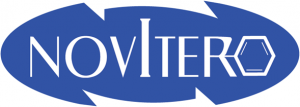Targeted Cancer Therapy
Recent technological advancements in the fields of genomics, genetics, molecular biology and computer based data-mining and knowledge discovery have enabled more specific therapeutics for cancer. Targeted cancer therapies are drugs that interfere with the growth, multiplication and spread of cancer cells by blocking the functions of specific protein molecules, called “Molecular Targets”. These proteins have specific roles in cellular functions and growth. Some of these proteins may be more abundant and functional only in cancer cells and not in normal cells. Some other proteins are also present and carefully regulated in normal cells, but they undergo alteration by structural and functional changes (i.e. mutations), that drive them to be over-activated or uncontrolled.
Drugs that specifically interfere with the function of a Molecular Target that is solely functional in cancer cells or that block the function of altered Molecular Target (i.e. mutated protein) belong to the family of Targeted Therapies or Targeted Drugs.
These drugs are different from standard chemotherapies, as the latter act to kill cells that are rapidly dividing and can therefore kill both cancer and normal cells (i.e. they are often called cytotoxic). Targeted therapies, on the other hand, are more selective and specific for cancer cells and often block tumor cell proliferation or spreading. They are also often called “Precision Medicines” or “Personalized medicines”, as the treatment is more precise for cancer cells and can also be tailored to the patient , by the identification of its individual “modified” Molecular Target Protein.
This concept was initiated by examination of tumor samples of breast cancer patients to investigate the presence of specific markers such as HER2/neu. In parallel, new molecular testing methods have enabled an extension of this approach to include testing that better define the prognosis in these patients and to suggest treatment options that are most likely to succeed.
The drug Herceptin® (Trastuzumab) was therefore specifically implicated in the breast cancer patient populations that have demonstrated over-expression of the HER2/neu receptor. Other patient population, lacking this receptor, is no longer eligible for treatment with this drug, as they are not expected to benefit from this treatment.
More recently, specific drugs aimed at receptors with demonstrated mutations, associated with cancer cells, were developed. An example of such a drug is Zelboraf® (Vemurafenib). This drug, which was approved by the FDA for late stage melanoma in 2011 and by the European commission in 2012, is specifically effective in patients that have a specific mutation in the enzyme B-RAF. Similarly, targeted therapeutics has been developed that effectively inhibit known genetic drivers of NSCLC such as EGFR and anaplastic lymphoma kinase (ALK).
However, most patients develop resistance to their prescribed inhibitor within a short period, making the drug no longer effective. Inhibitor resistance is driven by mutations in either the primary oncogenic gene or a separate gene in a secondary pool of cancer cells. Identification of the genetic driver of a patient’s inhibitor resistance can help a physician choose the appropriate ongoing treatment for the patient, which could include a next-generation inhibitor or other therapy that targets a separate oncogenic driver.
Zelboraf and similar drugs were found to be effective for a period, but subsequently, a large proportion of the patients develop specific mutations that hinder the further activity of the drugs. One such example are drugs acting on Epidermal growth factor receptor (EGFR) as therapeutic target, where breakthrough drugs as Gleevec, for example, has spurred the development of other molecularly targeted anti-cancer drugs with similar modes of action. Patients with primary mutations in the EGFR gene have dramatic response initially, but would eventually develop resistance to this and similar drugs. It was found that a secondary mutation in the EGFR gene (T790M mutation) is the main resistance mechanisms involved, affecting more than 60% of the treated patients. Similar treatment-emergent mutations that are associated with drug resistance are now commonly reported for many targeted cancer therapies on a variety of well established therapeutic targets.

